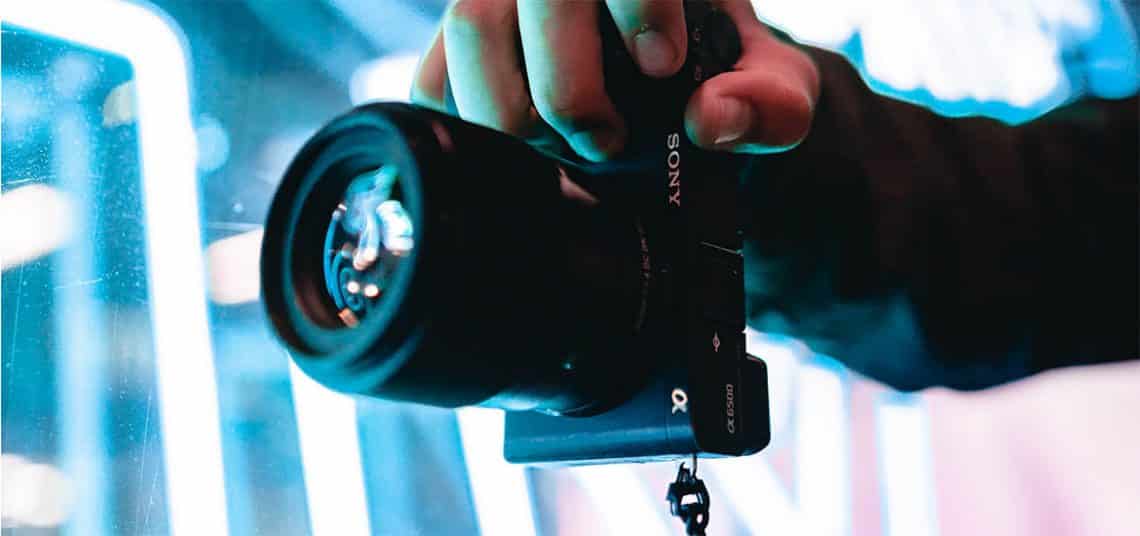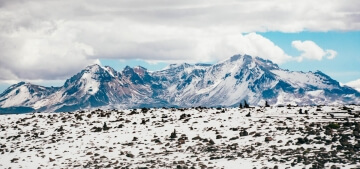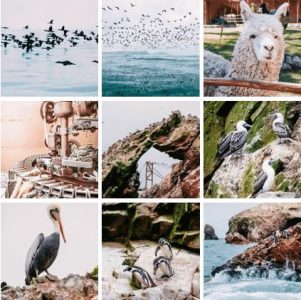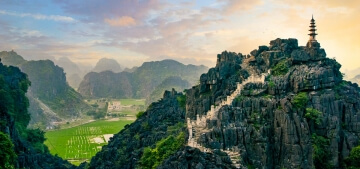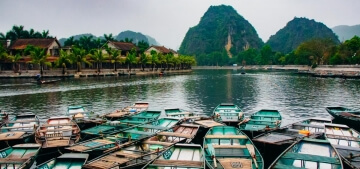This is a fantastic travel camera – it really packs a punch with its small size. If you’re going for an APS-C sized sensor, it’s one of the best options out there. One way to really make it work for you is to select the best travel lens for the Sony a6000 – the one that works for you and your style and budget.
The lenses in this article will work interchangeably with any camera in the A6000 series, so that includes the Sony A6000, A6100, A6300, A6400, A6500 and A6600.
Sony A6000 Series
The a6000 is a mirrorless interchangeable lens camera with an APS-C sized sensor. If that sounds confusing, here are a few definitions.
Mirrorless cameras don’t use the mirror present in SLR cameras, so they are smaller and more compact.
Interchangeable lens cameras allow you to swap out the lens as needed. This is great for versatility.
APS-C is a sensor size that is smaller than a full-frame sensor but still a lot larger than a cellphone or point and shoot.
Selecting the Best Travel Lenses
Everyone has a style of travel and for me, lightweight is the way to go. I mean, within reason.
I’m not really a one-bagger but I never check any of my camera gear in. I just don’t want to end up at my destination with my gear pilfered or damaged.
I also like to take my camera everywhere while traveling. My first SLR, I bagged in a gallon ziploc and took to Burning man! Which is about the dustiest place I’ve ever been.

Need a tripod for the trip?
If you want to capture the city at night or even the stars, check out these affordable tripods that are compact enough to travel in your carryon luggage!
So I tend to look for budget lenses that do a great job, rather than the best of the best premium lenses. I want to hit that sweet spot of price and quality.
To start with, let’s go over some of the factors you should consider when putting together the ideal travel lens kit.
Weight
As I mentioned before, a lightweight kit is best for travel. Not just for the flight, but even on longer hikes.
I used to carry a Canon 70d and 4 lenses but I am too damn old for that now. My neck and shoulders are killing me after a day or two of lugging all that around.
Equally important is knowing what you don’t need. If you really don’t care for wildlife photos, don’t lug a giant telephoto around.
Now with mirrorless cameras, we can go so much lighter, why, why would we cancel that out with multiple massive lenses? I see people do this all the time!
So keep in mind the weight of the lenses as you pick them. And not just the weight of each one, but the total weight of your kit as well.
Focal Length
Another key factor to consider is the focal length ranges of your lenses. The focal length of a lens is basically how zoomed in or out you are.
You want some versatility there. It would be sad to get to Iguazu Falls and realize you don’t have a lens that really gets it all in.

Or if you go on safari, you’re really going to want to zoom in with a long focal length to get those wildlife pics. You might really miss out without a good zoom.
The best travel lens really depends on you, the photographer and your personal style of photography.
Equally important is knowing what you DON’T need. If you really don’t care for wildlife, don’t lug a giant telephoto around. It’s a waste of space!
Remember – APS-C has a 1.5x crop factor, so a 50mm lens is effectively 75mm. Do the math when you figure out what ranges you want to cover. You can check out various crop factors here.
Aperture
The largest aperture on the lens tells you how much light in can gather in low light conditions. Since you can always stop down the aperture, it would seem you should get the largest aperture and go from there. But, this feature comes at a price so you have that balance it against cost.
The other nice thing about a wide aperture is that nice creamy bokeh that smoothes the background and highlights your subject more clearly.

Lenses that have a wide aperture like f/1.8 and under tend to cost a lot more than those with f/4 as the largest aperture. Just do yourself a favor and take one lens with an f/1.8 aperture.
You know those moments in the yurt with your new buddies sampling mongolian horse milk vodka for the first time? It is really nice to have at least one lens that can do the job in low light.
My tip here is to consider a fast prime for the job. You can get a wide aperture at a great price, and it will give you that beautiful bokeh that can really isolate your subject.
Weatherproofing
Weatherproofing may or may not be important to you. Honestly, it’s not important to me. The Sony a6000 range of cameras is not weatherproofed so there’s not much value in weatherproofing the lens.
I mention it here because I know people fret about it but in over 20 years of shooting in rain, dust, and humidity, I’ve really not had much of a problem.
And you know what? You can’t really shoot in rain anyway – those pesky water droplets still ruin the shot even in a weatherproofed camera.
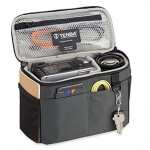
Keep your gear safe
A padded case can protect your gear during travel, and be popped into a backpack for the day. Buy this great accessory as a gift or just for yourself!
Best Travel Lenses for Sony A6000
1. Sony 18-105mm F4
The 18-105mm is what I call a superzoom. It covers the whole range of landscape through telephoto, so if you’re lazy like me, and looking for just one best travel lens, this is the one.
The lens is really quite sharp and incredibly versatile. Most photogs find they keep this lens on 90% of the time. This one’s great for the photographer that wants to keep moving and shooting, rather than swapping between several primes.
I recently went to Yellowstone and a superzoom was really a great choice because at times your zooming out to capture some surreal orange thermal pool and then you see a bison in the distance and bam, you zoom in to shoot that.
The kit lens is actually a great walkaround lens as well, and it weighs in at just 116g. So don’t rule that out as an option. This is heavier but covers a huge focal range in comparison.
The kit lens has a focal range of 16-50mm so while you gain some wide angle, you lose quite a bit of zoom. But if your shooting style is more landscape than wildlife, maybe you don’t need all that zoom. In that case, the kit might be the better lens for you.
But if you like to isolate your subject and get that nice narrow DOF sometimes, the extra zoom helps with that.
2. Sony 35mm F1.8
The next lens I usually recommend in a travel kit is a lowlight prime. The reason being that the kit or walkaround lenses tend not to have the best lowlight performance.
The walkaround lens is an f/4 lens so it’s not especially fast. This isn’t much of a concern when you’re hiking about during the day, but at night it’s great to have a lens that can capture the moment without resorting to flash. Because, who wants to be that person?
This prime is pretty compact, and nice and light at 1.8g
3. Sigma 30mm F1.4
This is another lowlight prime that’s a great option. Amazingly it’s an f/1.4 lens that costs a good bit LESS than that Sony. As I mentioned earlier, the wider aperture usually costs a good bit more.
While this is a great lens that will capture gorgeous shots with natural light, you might want to note that the lens is about double the size and more than 100g heavier than the Sony.
And you know what, you probably won’t notice less that one stop more light coming in, but you will notice the weight.
However, as this is quite a bit more affordable, this is a good budget option.
4. Sony 10-20mm F4 (Updated for 2024)
This ultrawide zoom is a great choice for landscape shots. If you’ve never shot with an ultrawide, trust me, they really pull you into the image with that frame of view.
I like the dramatic nature of ultrawide shots. And since this one’s a zoom, you’re not stuck at one focal length but have some versatility.
5. Rokinon 12mm F2.0
The Rokinon 12mm f/2 is an ultra wide angle lens. It’s manual focus but honestly, with such a wide lens, it really doesn’t matter. It’s really easy to get most things in focus with such a wide angle.
This lens is a really great deal as well, it’s just a hidden gem in my opinion. A lot of people don’t consider it because of the manual focus and the Rokinon badge.
But now you know the secret – buy this fantastic lens.
It’s a great choice for landscape and architecture, of course. And should an incredible starry sky appear above you, you can try some astrophotography.
If you haven’t tried astro, you actually don’t need a ton of equipment for a simply starry shot. You just need to follow the rule of 500.
The rule of 500 says the longest shutter speed you can use before your photo gets blurry is equal to 500 divided by your lens’ effective focal length.
So with the Rokinon 12mm lens, that’s effectively 18mm with the 1.5x crop factor. The 500 rule says you get 500 / 18, so upto 27.7 secs to capture the stars. Paired with the f/2 aperture, that’s plenty of time to get a great shot of the milky way.
6. Sony 70-350mm F4.5-6.3
If you are going on a safari, it helps to have a lot of reach, so I definitely want to include a telephoto.
However, you should know, this one is quite heavy and quite expensive so unless you really need the reach, it might be overkill.
Buy Alpha 70-350mm F4.5-6.3 Now
If I were to spend on a safari like trip, I would go ahead and buy this one, but not for an average trip.
Best Travel Lenses for the Sony A6000 series
So here we are, that’s the rundown of all the great lenses that would work for different travel styles.
Remember the goal is not to buy all of them but come up with a 2 or 3 lens kit that works for you. So the question is, which kit is for you?
I’ll summarize the lenses here and then we can combo them up into a few kits.
| Type of Lens | Lens | Cost | Weight |
|---|---|---|---|
| All Around Super Zoom | Sony 18-105mm F4 | ? | 427g |
| Lowlight Prime | Sony 35mm F1.8 | $$ | 155g |
| Sigma Lowlight Prime | Sigma 30mm F1.4 | $ | 265g |
| Ultrawide Zoom | Sony 10-20mm F4 | $$$ | 178g |
| Ultrawide Manual Prime | Rokinon 12mm F2.0 | $ | 245g |
| Safari Telephoto | Sony 70-350mm F4.5-6.3 | $$$ | 780g |
Kit Combinations
The biggest mistake new owners of mirrorless cameras make is to buy too many lenses and end up with just as big and heavy a kit as an SLR.
And then the camera bag, full of lenses, ends up stuck in the closet because it’s just too inconvenient to take places.
You definitely don’t want to do that. So pick a lightweight solution that works for you.
One Lens
If you’re going to go with one lens, for sure it should be the Sony 18-105mm. This lens is just great quality in a great package, with tons of versatility.
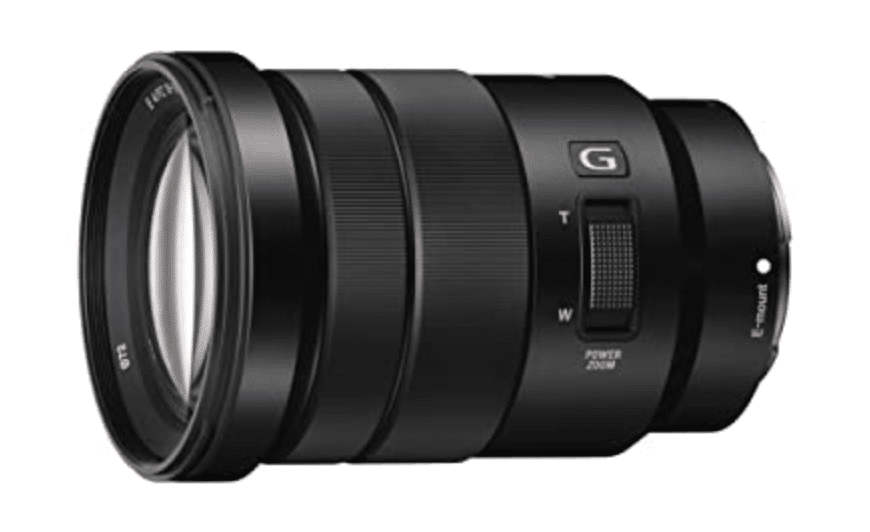
The Do It All – Sony 18-105mm f/4
Huge focal range · One lens workhorse
Weight: 427g
Cost: $$
Two Lens Combo
The shots you will most likely miss, with one lens, are those late night low-light shots so a great two lens combo is the superzoom and a lowlight prime.
So another great kit is this lowlight upgrade:
Lowlight Upgrade Kit

Superzoom – Sony 18-105mm f/4
Huge focal range · One lens workhorse
Weight: 427g
Cost: $$
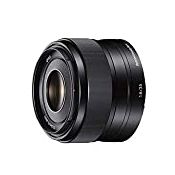
Low-light Prime Sony 35mm f/1.8
Incredible image quality Large aperture
Weight: 155g
Cost: $$
If you’re early to bed and early to rise to catch the sunrise, maybe you don’t need a lowlight normal lens. Instead go for a great ultrawide lens as your second lens:
Ultrawide Upgrade Kit

Superzoom Sony 18-105mm f/4
Huge focal range · One lens workhorse
Weight: 427g
Cost: $$
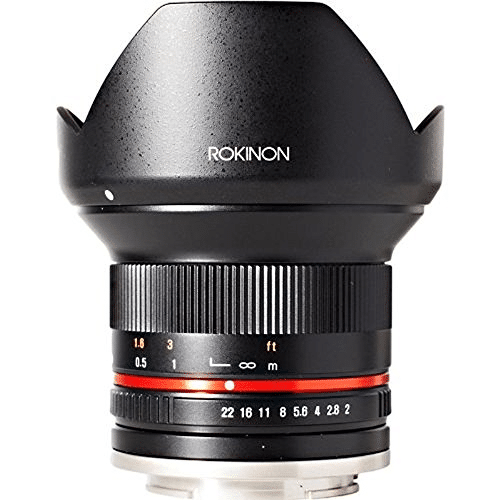
Ultrawide Rokinon 12mm F2.0
Dramatic landscape shots · Astrophotography gem
Weight: 245g
Cost: $
These are some examples of a kit you can build with these recommendations. Obviously not all the possible combos, but hopefully you have the info to build your own.
Conclusion
I hope this has helped you pick the perfect travel kit to take on your next trip. The best travel lens for the Sony a6000 is a very personal choice – what you love to shoot and how you like to travel are an important part of the equation.
Always remember that you want to consider the overall weight of the kit and go easy. It’s better to have a few lenses you take everywhere than a lot of lenses that sit in the closet.
Stay shooting.
This post has affiliate links. As an Amazon Associate I earn from qualifying purchases. The opinions presented are my own.
